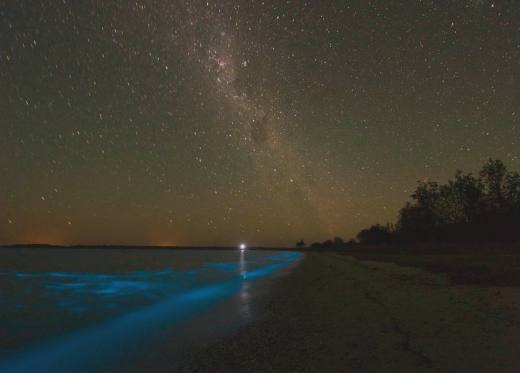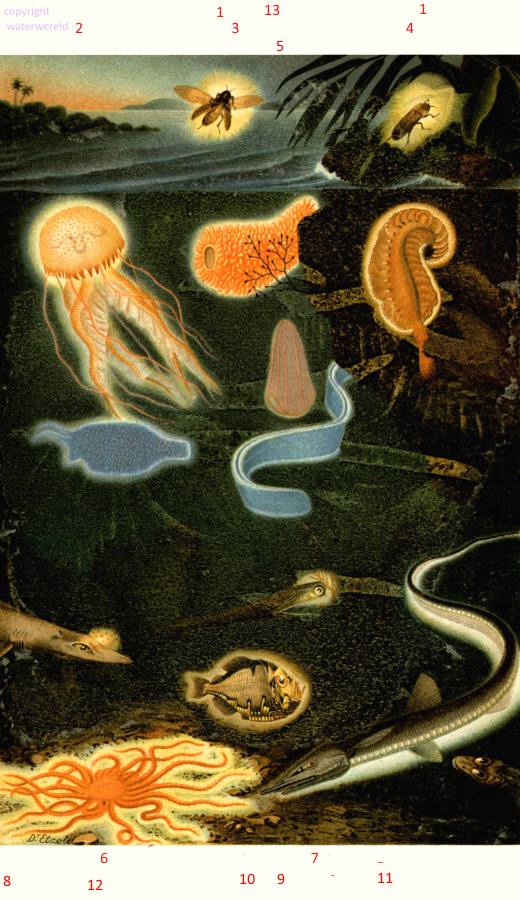seasparkle
Seasparkle is a single-celled organism, ( it consists of only one cell ), but can be seen with the eye. It lives in shallows seas, and belongs to the plancton. It feeds with bacteria and algae that stick to the surface of the seasparkle. The flagellum sweeps the bacteria into the oral cavity where it sticks, and removes waste matter. The seasparkle is eaten by small shrimps and fishes.

The jellylike speaparkle is in fact a large dinoflagellate. The flagellum is not used for propulsion but to collect bacteria.
seasparkle and the twinkling of the waves.
Sea sparkle produces blue light by biolumnicence. Noctiluca scintillans is the most common cause of bioluminescence in the open ocean. Sea sparkle produces blue light by biolumnicence.
This light is produced by some organelles in the body of the seasparkle, and not by light emitting bacteria.

Biolumnicence of the Sea sparkle. But it is not clear why the sea sparkle is doing this: Some think it is done to deter enemies , some think that is done to burn oxygen in the cell or to attract other Sea sparkles.
Flowering of the water.
As the Sea spakle feeds on bacteria and algae , high concentrations of them give high amounts of sea sparkles. The water colors orange. This can be easely followed by satalites. It can be seen as a Yearly event in the Noth sea. in

1 Fire Beetle or Cucujo or Pyrophorus noctilucus
2 mauve stinger or pelagia noctiluca
3 pyrosoma elegans, a pelagic invertebrate.
4 common sea pen or Pennatula phosphorea
5 cigar comb jellies or Beroe ovata
6 Phylliroe bucephalum, a fishlike nudibranchium
7 Venus girdle of Cestus veneris
8 Centophorus galeus , shark of the deapsee
9 Stoplight Loosejaw or Malacosteus niger
10 Spiny Hatchetfish or polyipnus spinosus
11 halosaurus macrochir
12 Freyella elegans
